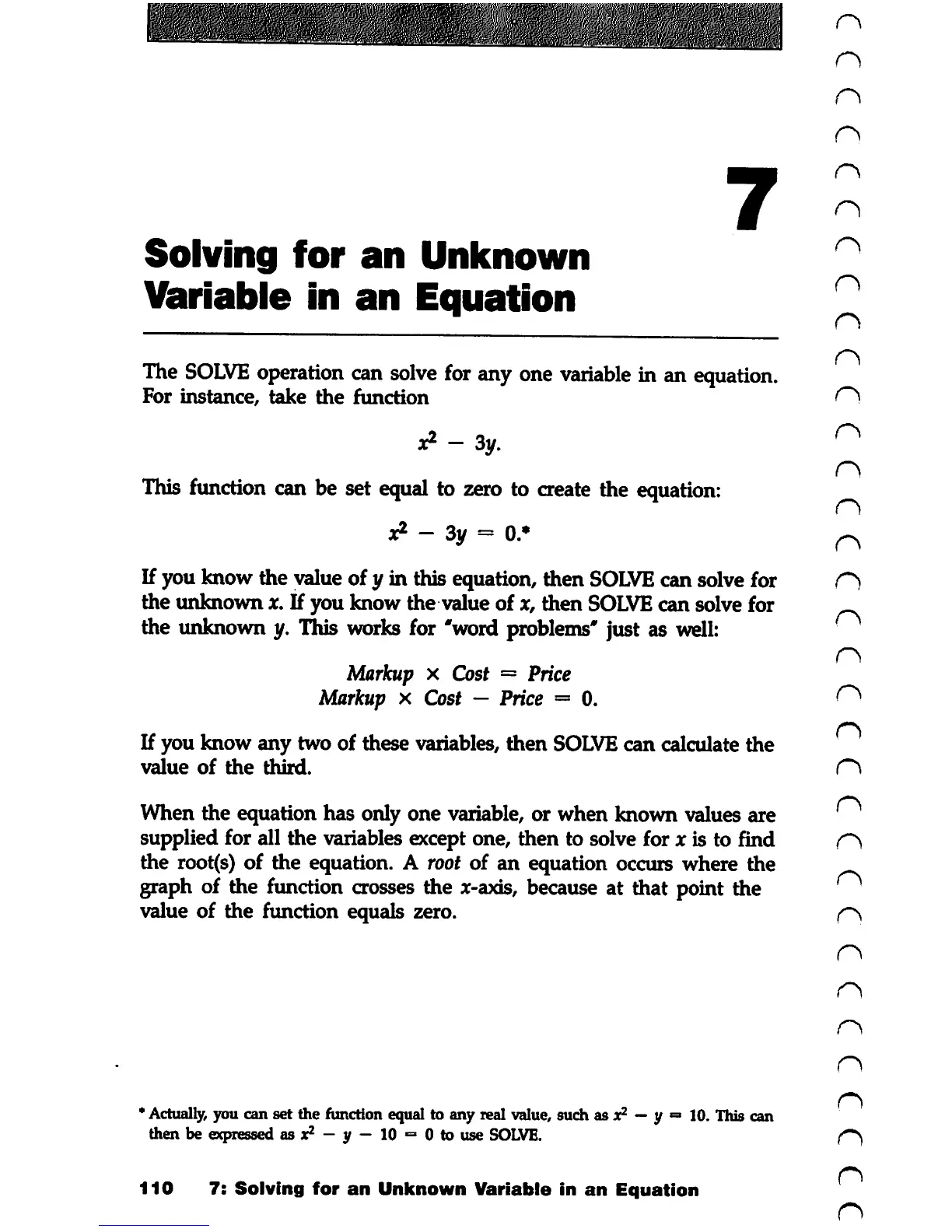Solving
for
an
Unknown
Variable
in
an
Equation
7
The
SOLVE
operation
can
solve
for
any one
variable
in an
equation.
For
instance,
take
the
function
x2
-
3y.
This
function
can
be set
equal
to
zero
to
create
the
equation:
x2
- 3y =
0.*
If you know the valueof y in this equation, then
SOLVE
cansolve for
the unknown x. If you know the value of x, then
SOLVE
can solve for
the unknown y. This works for 'word
problems''
just as
well:
Markup
x Cost =
Price
Markup
x Cost —
Price
= 0.
If you know any two of these variables, then
SOLVE
can calculate the
value
of
the
third.
When
the equation has only one variable, or
when
known values are
supplied for all the variables except one, then to solve for x is to find
the root(s)
of
the equation. A
root
of an equation occurs where the
graph of the function
crosses
the
x-axis,
because at that point the
value
of
the function equals zero.
*
Actually,
you can set the
function
equalto any realvalue,such as x2 — y
=»
10.This can
then be
expressed
as x2 — y —10 ° 0 to use
SOLVE.
110
7:
Solving
for
an
Unknown
Variable
in
an
Equation

